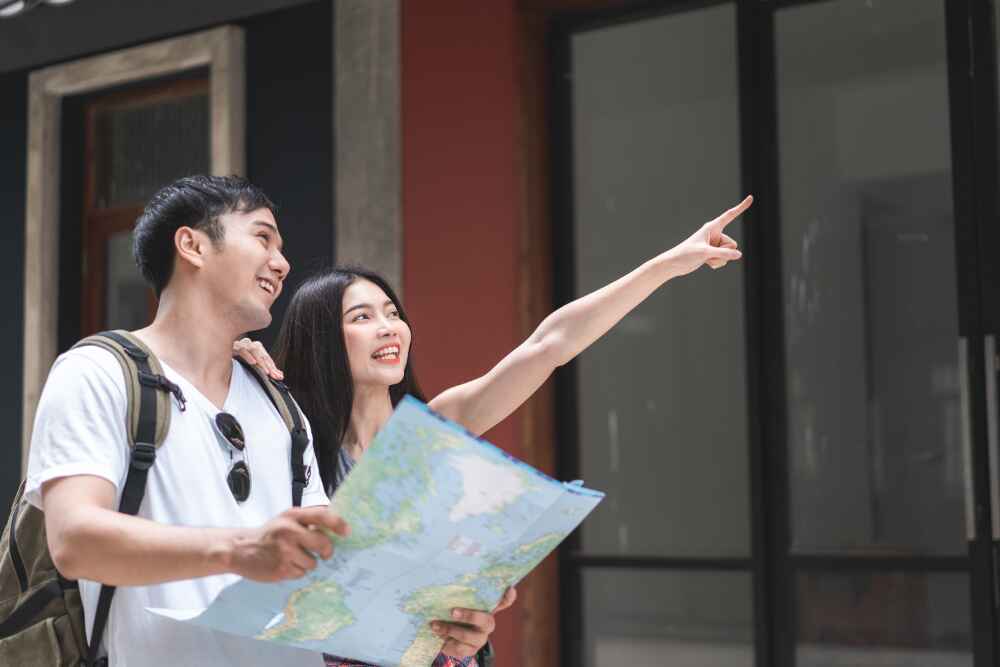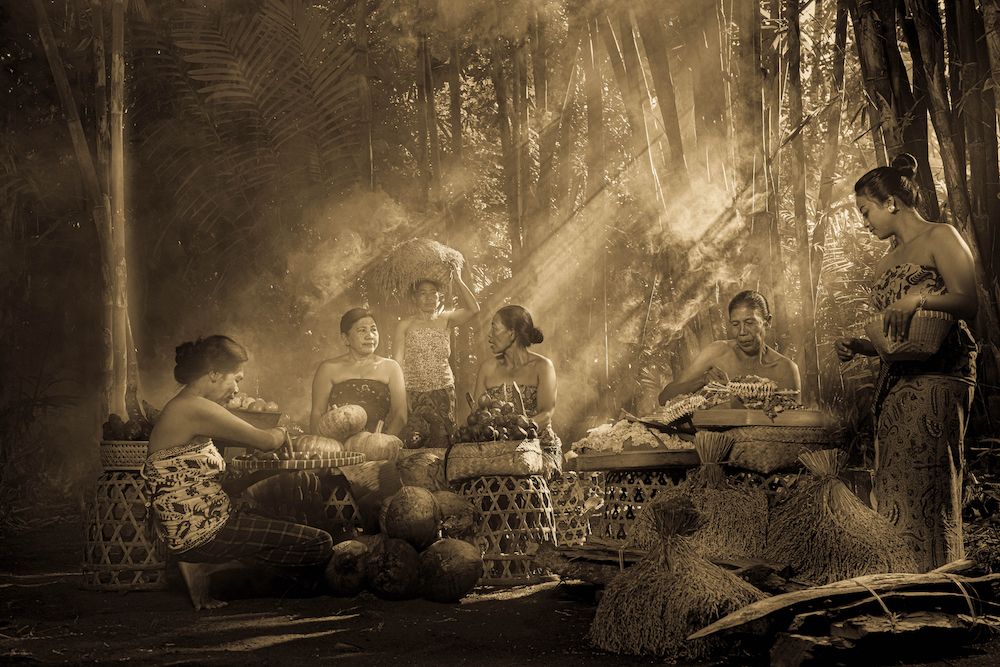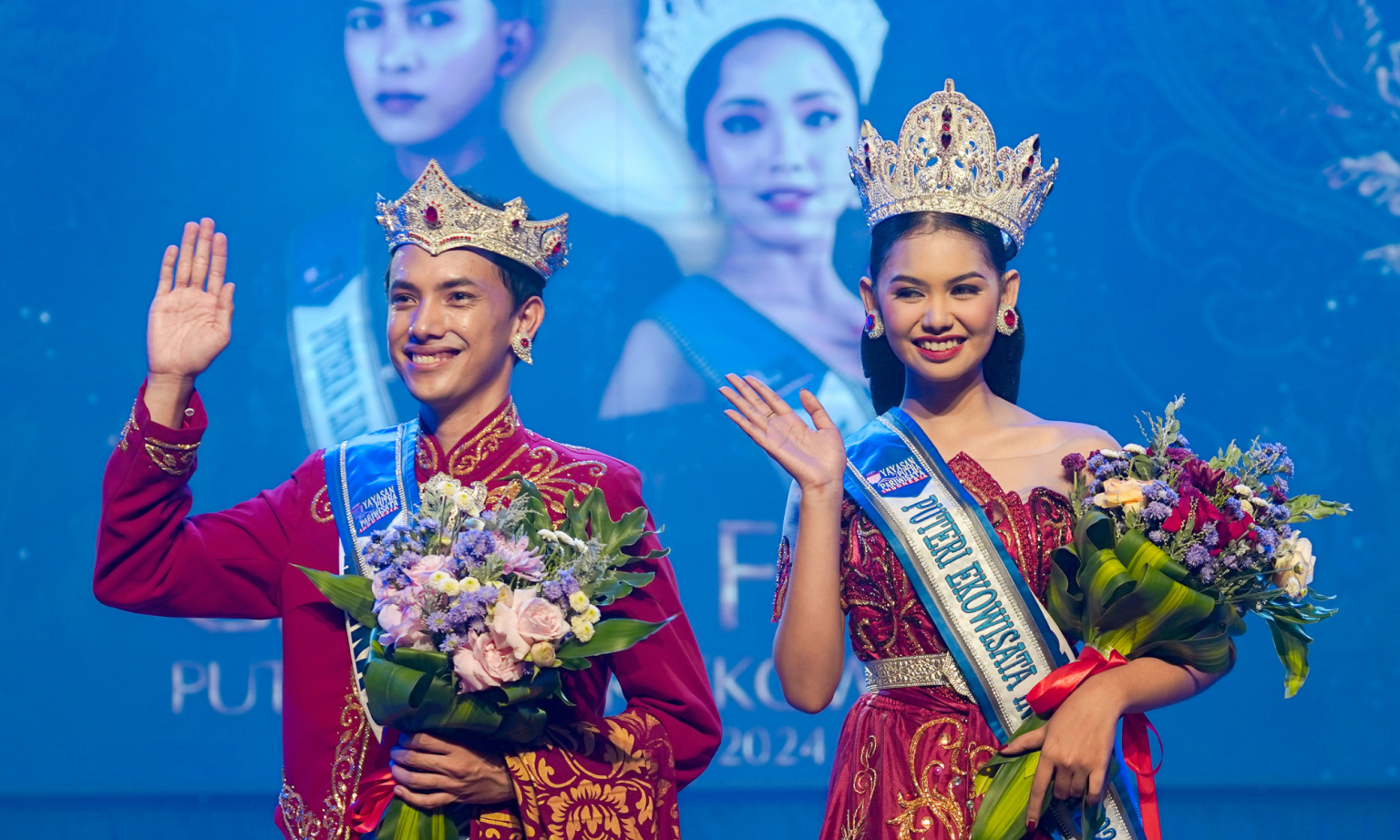Bali never runs out of ways to captivate. From the roaring waves of Uluwatu to the cool rice fields of Ubud, this island always has a story that can hypnotize anyone just by hearing its name.
However, to gain a deeper understanding of Bali's culture and way of life, head to the Samsara Living Museum. A place that presents the real life of the Balinese people.
Embracing the Meaning of Life through Culture at Samsara Living
Located in Jungutan Village, Karangasem, Samsara Living Museum is not just a tourist destination. This place embodies the efforts to preserve Balinese culture in everyday life.
Once you step foot here, you'll feel like you're being guided through a time warp, into a past Bali untouched by modernization.
The authentic Balinese architecture immediately catches your eye, the warm greetings of the locals, and the welcoming scent of incense in every corner create a sacred yet calming atmosphere.
Built with Palmyra Manuscripts passed down from generation to generation
Samsara Living Museum is not only a place of cultural activity, but also a space of contemplation built from ancient Balinese literacy. Behind every ritual and gesture, there are lontar texts that have been passed down from one generation to the next.
Lontar Sutasoma
This Lontar is a symbol of inclusive and tolerant human values. It contains the teachings of "Unity in Diversity," which is now the country's motto.
So don't be surprised if you are invited to contemplate these values as the spiritual and social foundation of Balinese society.
Lontar Dharma Caruban
Lontar Dharma Caruban is an ancient manuscript that serves as a guide to Balinese gastronomy. It contains not only traditional recipes but also a healthy food philosophy that emphasizes the balance of taste and harmony with nature.
You'll experience firsthand how this text has been a cornerstone in shaping the Balinese way of life, which is structured in harmony with nature yet open to new things that come into life.
Lontar Jyotisha
Jyotisha is an ancient Balinese astrology that forms the basis of wellness practices at Samsara. Through the Oton method, you can discover the appropriate body and soul care based on your day of birth and cosmic energy.
At the Samsara Living Museum, you will witness firsthand how the Balinese read Pratiti, which teaches that the universe moves in rhythm, in harmony with human life.
Live Like a Real Balinese at Samsara Living Museum

At Samsara Living Museum, you are not only a spectator of culture, but also part of the process. A variety of authentic activities have been prepared to take you through Balinese traditions up close and personal.
1. Getting Blessed Water from Telaga Tista
Experience the solemn ritual of water blessing or holy water from Telaga Tista. Telaga Tista is a sacred spring believed to draw positive energy directly from the nature of Mount Agung.
Led by the traditional leader (Ida Mangku), the holy water (tirta) is sprinkled as a symbol of self-cleansing, asking for safety, and soul balance.
2. Pratiti Reading
At Samsara Living, the wellness experience is rooted in Jyotisa, ancient Balinese astrology. Through Oton and Pratiti calendar readings, get ready to understand the energy seen from your date of birth.
This activity can help you reflect on yourself and design a lifestyle that is more in tune with nature.
3. Manuscript Writing
At Samsara Living Museum, you can witness firsthand how the tradition of writing on palm leaves is still respectfully maintained. This process is not just about copying texts, but about caring for an ancestral heritage that is rich in meaning.
Through this experience, you are invited to understand that literacy is the long breath of Balinese civilization that should be proud of and preserved.
4. Captivated by Ngoncang
Ngoncang is a unique and energizing musical expression of culture. It is created by the activity of pounding rice, where four to six village women alternately beat elu, a long wooden stick, into a mortar.
The resulting rhythm is born of togetherness, perseverance, and agrarian traditions that are still alive today. At Samsara Living Museum, you'll see firsthand how noncang is a real harmony between work and culture.
5. Making Loloh Traditional Drink
Loloh is a traditional Balinese herbal drink made from natural spices, including turmeric, ginger, temulawak, and kencur.
At Samsara Living Museum, you can learn how to make it traditionally: grind, boil, and filter it into a nutritious essence.
More than just herbal medicine, loloh is a symbol of harmony between man and nature, as well as a cultural heritage that nourishes the body and touches the soul.
6. Seeing the Making of Silver Handicrafts
At Samsara Living Museum, traditional preservation is always paired with economic empowerment. One manifestation of this is the art of silver craft.
You can see first-hand the manufacturing process, from melting to forming fine details that are full of meaning.
More than just accessories, silver in Bali has an essential function in traditional ceremonies and daily life.
7. Learn to Make Offerings (Canang Sari)
For the Balinese, the Canang sari is not just an offering, but a form of gratitude to the universe. Gratitude is expressed through sheets of janur, flower petals, pieces of incense, and tucked into prayers.
At Samsara Living Museum, you will learn directly from village women who patiently guide your every hand movement.
It's not just about arranging, you'll be invited to understand the meaning behind the color of the flowers, the direction of placement, and simple philosophies that touch your heart.
8. Traditional Balinese Cooking and Arak Making
Stepping into the traditional kitchen at Samsara Living Museum is like stepping into the warm past. The smoke from the wood stove welcomes you with a nostalgic aroma, while fresh ingredients from the community garden are neatly arranged on bamboo trays.
You can cook your own specialties such as lawar, satay lilit, urab, and jukut liklik using traditional recipes. The experience concludes with the Balinese tradition of eating together, megibung, which brings flavors and togetherness together.
You will also have the opportunity to make traditional Balinese arak through a fermentation and distillation process that remains authentic. Arak in Bali plays a vital role in religious rituals as a symbol of offering to the gods and the universe.
9. Delve into Genjek
You can watch the Genjek dance in action. This is Karangasem's signature social art born out of togetherness.
The melodies, spontaneous verses, and expressive body movements present a natural choreography that is joyful and lively.
For the Balinese, Genjek is not only entertaining, but also a way to express moods, celebrate successes, and laugh at life in a warm and honest way.
10. Learn Balinese Dance with an Expert
The graceful movements of Balinese dancers bring Samsara Living Museum to life, blending with the natural setting and traditional architecture to present Bali in its most authentic form.
You can also interact directly with the dancers, learn the meaning behind each movement, and experience the soulful expressions in the rich classical dances.
11. Making Bamboo Crafts
At Samsara Living Museum, the use of natural materials such as bamboo is not only exhibited but revived through hands-on practice. You will be introduced to the process of bamboo weaving.
Starting from sorting the slats to shaping the plait into a container, decoration, or ceremonial equipment. Through cultural and economic approaches, this tradition is maintained to remains relevant and meaningful in the midst of modernity.
How to Get to Samsara Living in Bali
Samsara Living Museum is located in Jungutan Village, Bebandem District, Karangasem Regency, about 2.5 hours by road from Ngurah Rai Airport. Although it is far from the center of the crowd, that is precisely what makes it special.
Route by Private Vehicle
From Denpasar or Ngurah Rai Airport, you can use a rental car or travel service to the east of Bali via Jalan Bypass Ida Bagus Mantra.
After reaching Amlapura, follow the directions to Jungutan Village. The road is quite good, but it is still recommended to use a local driver if you are not familiar with the terrain to Jungutan Village.
Alternative Public Transportation
If you want to use public transportation, you can take a DAMRI bus or shuttle to Amlapura, then continue your journey with a local ojek.
However, this option requires extra time and effort, so make sure you're ready for a more authentic adventure.
Time to Find Yourself Amidst Tradition
Samsara Living is not a place to escape from life, but rather a place to return to our roots as cultural beings.
In the midst of the busy modern world, this experience is a reminder that harmony can be found in simplicity.
If you're looking for more to Bali than just beaches and parties, then Samsara Living can be a turning point to get to know the culture, get to know others, and get to know yourself.
With an entrance fee of Rp100,000, you're already opening the door to an experience that goes much deeper than just tourism.
Rediscover the meaning of travel by stepping into Samsara Living, where culture, nature, and soul meet.









